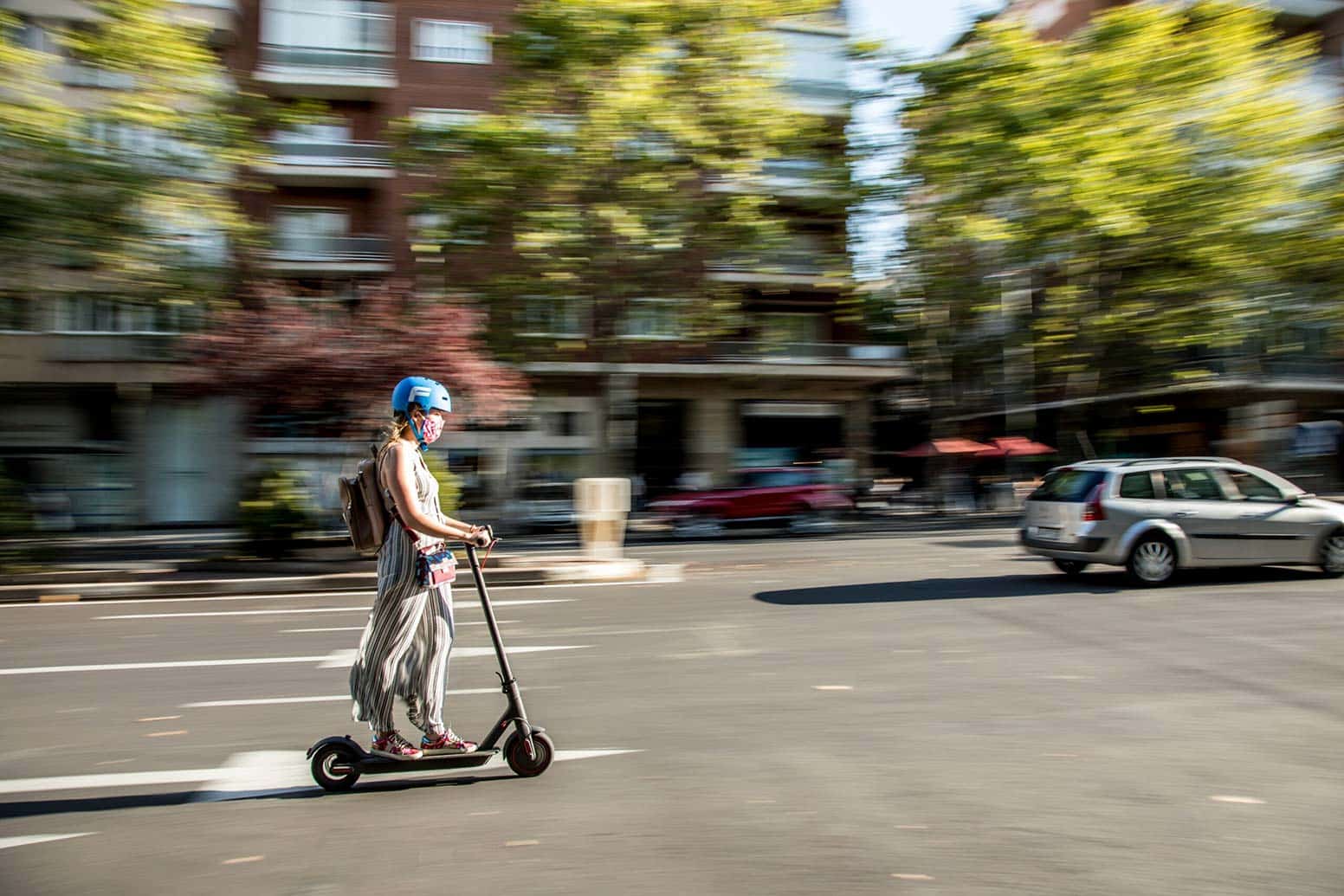
Originally published October 26, 2022, updated July 29, 2024
With the recent influx of e-scooters and e-bikes in Vancouver, BC, you may be wondering what the difference is between the two. Both are great alternative modes of transportation and they each have their own unique benefits. In this blog post, we’ll break down the key differences between e-scooters and e-bikes so you can decide which one is right for you.
What is an E-Scooter?
E-scooters are small, electric vehicles with handlebars that you stand on while riding. They typically have a range of 15-30 km and can reach speeds of up to 24 km/h. Many e-scooters also come with features like built-in lights and antilock brakes.
E-scooters are perfect for quick, short trips around town. They’re small, lightweight, and easy to maneuver, making them ideal for running errands or getting to and from work. And, since they don’t require pedaling, they’re a great option if you’re looking for a workout-free ride.
What is an E-Bike?
An e-bike, or electric bike, is a bicycle that is propelled by a motor. E-bikes can be classified into two main types: throttle bikes and pedal-assist bikes. The latter type is more common, as it relies on electric power to help the rider pedal.
E-bikes are ideal for longer trips or if you’re looking to get some exercise in while you commute. They provide a bit more power than e-scooters, so they can better handle hills or longer distances. They offer a low-impact workout that’s perfect for those who want to get some exercise in without having to go to the gym. But if you want to take it easy, the electric motor is always there to help.
E-bikes have been around longer than e-scooters and are thus more established. They tend to be more expensive than e-scooters, both to buy and to operate (you’ll use more electricity charging an e-bike battery than an e-scooter battery). However, they also have a much longer range — most e-bikes can go for 100km or more on a single charge. And if you live in a hilly area, an e-bike will be a much better option than an e-scooter since they can help you power up those hills with ease.
Key Differences
Range and Battery
E-bikes generally have a much longer range than e-scooters — most e-bikes can go for 100km or more on a single charge, while e-scooters typically have a range of 15-30 km. However, e-bikes also consume more electricity due to their larger batteries.
Power and Terrain
E-bikes provide more power and are better suited for hilly areas, whereas e-scooters are more suitable for flat terrains and short, quick trips.
Cost
E-bikes tend to be more expensive than e-scooters, both to buy and to operate. However, they offer greater versatility and distance capabilities.
Exercise
E-bikes offer a low-impact workout option, especially the pedal-assist variety, while e-scooters do not require pedaling, providing a more relaxed mode of transport.
Environmental Impact
Both e-scooters and e-bikes contribute to reducing carbon emissions when compared to traditional fuel-powered vehicles. E-bikes, with their longer range and higher battery capacity, might have a slightly higher environmental footprint during manufacturing but offset this through extended use.
Maintenance Costs
E-bikes generally require more maintenance due to their complex mechanical and electrical systems, whereas e-scooters are simpler and often cheaper to maintain.
User Demographics
E-scooters are popular among younger adults (18-35), who value their portability and ease of use for short trips. E-bikes, on the other hand, tend to be favored by a broader age range, including older adults who appreciate the pedal-assist feature and the ability to travel longer distances.
Updated Regulations and Trends
E-mobility is on the rise in British Columbia! A pilot project approved in 2021 allows six municipalities across the Lower Mainland to access electric kick scooters. This project aligns the rules for kick scooters with those for e-bikes, requiring users to be at least 16 years old, wear a helmet, and follow cycling road rules. A driver’s license and insurance are not required for either mode of transportation.
The Province of BC has specific requirements for kick scooters to ensure safety and integration into the active transport network, contributing to the CleanBC goal of doubling trips taken by walking, biking, and other active networks by 2030.
Pros and Cons of E-Bikes and E-Scooters
E-Bike Pros
- Range and Power: Longer range and higher power, ideal for longer commutes and hilly areas.
- Exercise: Provides an option for low-impact exercise.
- Versatility: Suitable for various terrains and weather conditions.
E-Bike Cons
- Cost: Higher initial cost and maintenance expenses.
- Weight and Size: Heavier and bulkier, making storage and transport more challenging.
- Complexity: Requires more understanding of the system and regular maintenance.
E-Scooter Pros
- Portability: Small and lightweight, easy to carry and store.
- Cost: Generally cheaper to purchase and maintain.
- Ease of Use: Requires no physical exertion and is simple to operate.
E-Scooter Cons
- Range and Power: Limited range and less power, making them unsuitable for long trips or hilly terrain.
- Battery Life: Shorter battery life and longer recharge times compared to e-bikes.
- Weather Dependence: Less suitable for adverse weather conditions due to lack of coverage and stability.
Should I Buy an E-Bike or an E-Scooter?
So, which is better—an e-scooter or an e-bike? It depends on your needs and preferences. If you’re looking for something cheap and cheerful that you can easily zip around town with, go for an e-scooter. If you need something with more power that can take you further distances, go for an e-bike. Either way, you’ll be taking a step towards living a more sustainable lifestyle!
If you’re looking to purchase an electric bike, we carry many styles from top brands. You can even try one out first by renting an E-bike! If you’re curious about how e-scooters compare on the road, you can rent an electric scooter and experience one for yourself! Stop by Cycle City to have our friendly team assist you in finding the perfect fit.








